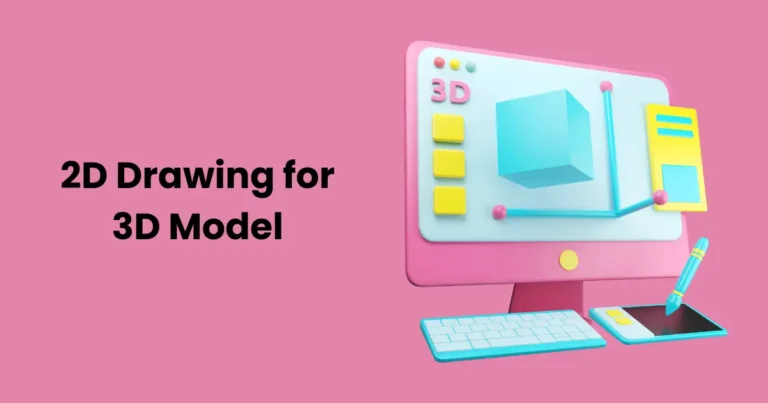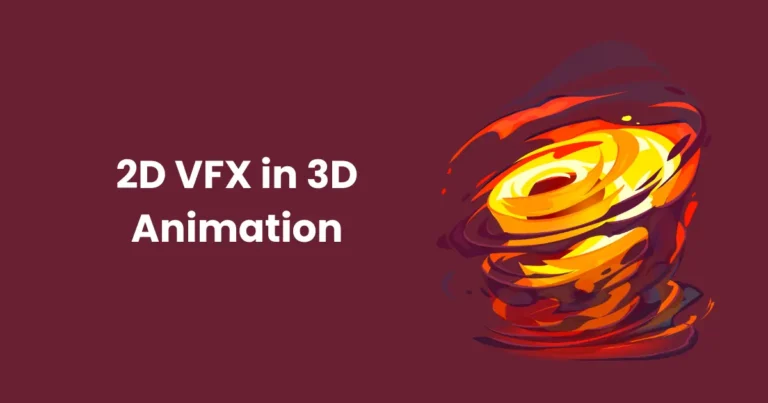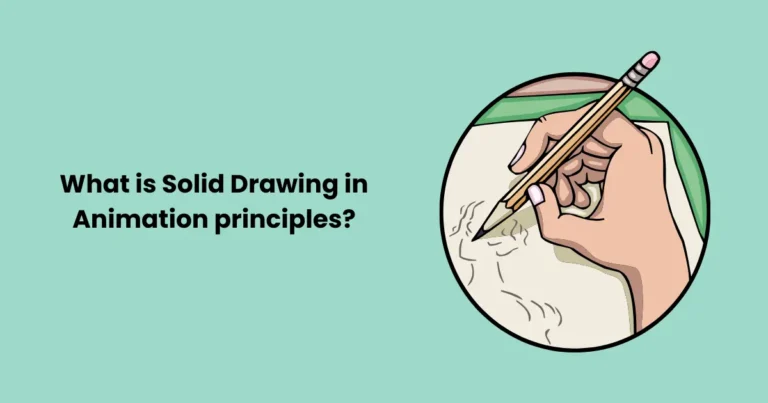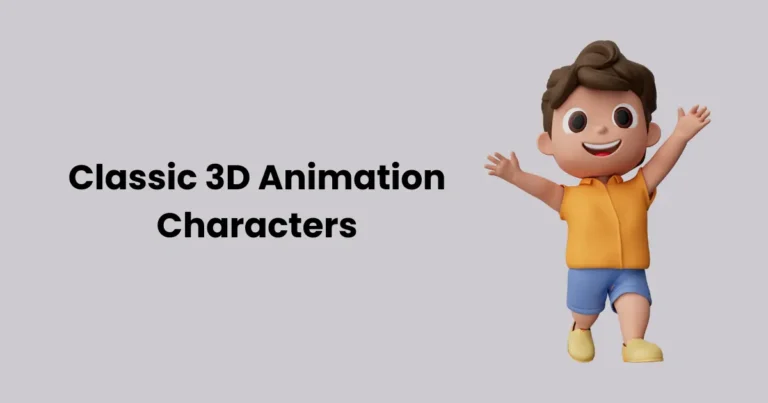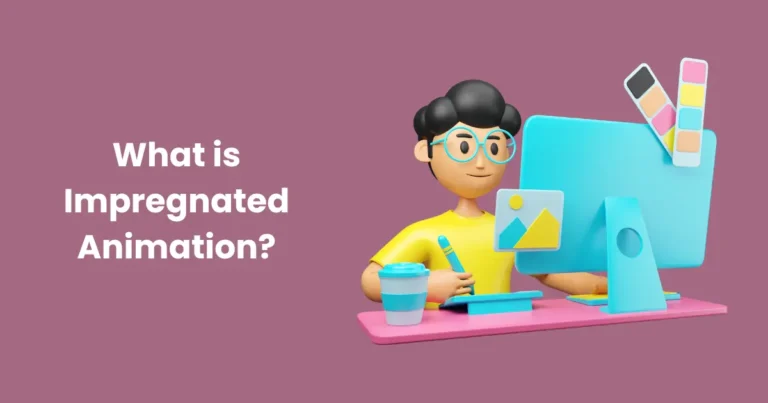A Complete Guide to Concept Art Process in 2025
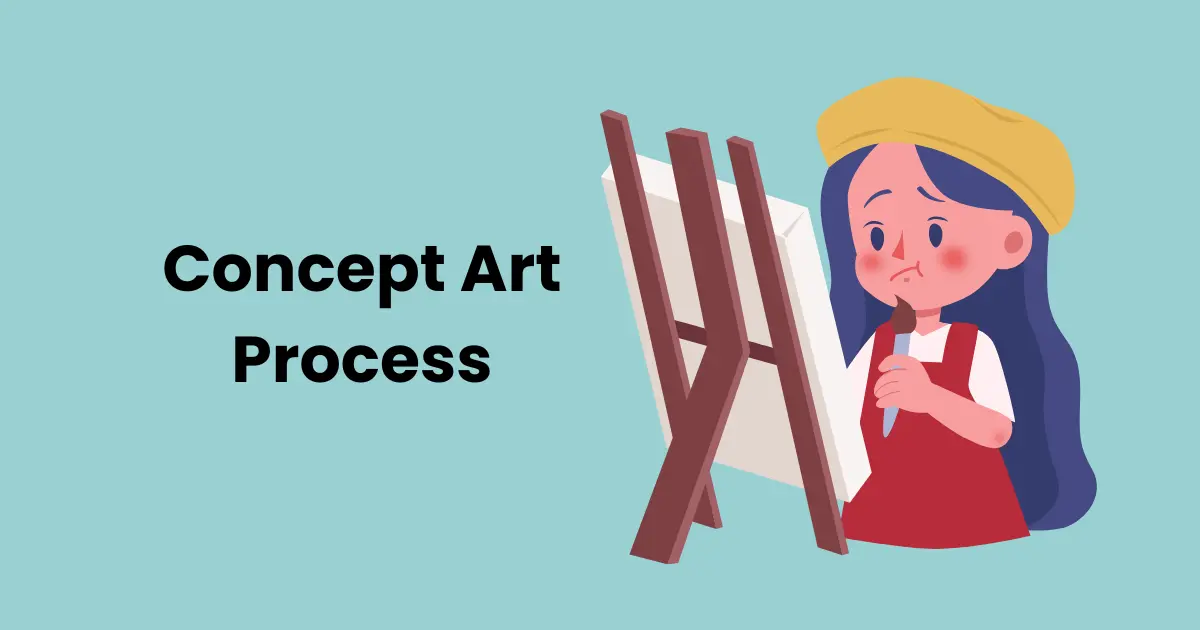
Contents
The concept art process is a fundamental phase in the creation of visual media, whether it be for films, video games, animation, or other creative industries. Concept art is essentially the visual blueprint that sets the tone, style, and direction for a project. It is used to explore ideas, develop characters, design environments, and conceptualize objects before they are fully realized in production.
In the concept art process, artists work closely with directors, designers, and other creatives to visualize abstract ideas and bring them to life. This phase allows the creative team to experiment with different styles, compositions, and themes before moving forward with production. By translating concepts into visual art, the concept art process helps ensure that everyone involved in the project shares a unified vision, ultimately improving the final product.
This article will walk you through the essential stages of the concept art process, highlighting key techniques, tools, and tips to master this important art form. Whether you’re a beginner or an experienced concept artist, understanding these steps will help you develop powerful designs that resonate with audiences and bring creative ideas to life.
What is Concept Art?
Concept art is a form of visual representation used to convey ideas, themes, and designs in the early stages of production for films, video games, animation, and other creative projects. It serves as a blueprint for the visual direction of a project, providing a foundation for the design of characters, environments, props, and overall aesthetics. The purpose of concept art is to translate abstract or verbal ideas into visual concepts, making it easier for the entire creative team to understand the intended look and feel of the final product.
During the concept art process, artists create multiple iterations of designs, exploring different visual styles, compositions, and color schemes. These initial sketches and designs help to clarify the vision of the project, allowing for feedback and refinement before moving into more detailed production work. Concept art is not about creating polished, final images but rather about visualizing and exploring possibilities.

Key areas where concept art plays an essential role include:
- Character Design: Developing the visual appearance of characters, including their clothing, accessories, and facial expressions.
- Environment Design: Crafting the settings and worlds in which the story takes place, from natural landscapes to urban spaces.
- Props and Objects: Designing objects and tools that are integral to the story, such as vehicles, weapons, or futuristic gadgets.
- Visual Storytelling: Conveying the mood, tone, and narrative elements of a scene through imagery.
Ultimately, concept art helps guide the production team, ensuring that the final product maintains a cohesive and compelling visual style that aligns with the project’s goals and vision.
Stages of the Concept Art Process
The concept art process is an essential journey that begins with a simple idea and progresses toward fully realized designs that guide production. This process involves several stages, each building upon the previous one to refine ideas and create cohesive, compelling visuals. Let’s explore the key stages of the concept art process that every concept artist follows.

3.1. Initial Research and Reference Gathering
The first stage of the concept art process is research. This phase is crucial as it helps the artist gather inspiration and information for the project. Research involves looking at existing works, gathering visual references, and understanding the project’s requirements. Whether it’s historical references for a period film or fantasy elements for a video game, the goal is to collect materials that help inform the designs.
During this stage, the concept artist may:
- Study the story, character backstories, and setting descriptions.
- Collect images, textures, and photographs related to the visual style.
- Review similar works or materials to ensure the designs align with the project’s overall vision.
By thoroughly researching and gathering references, the artist lays the groundwork for creating designs that feel authentic and aligned with the project’s goals.
3.2. Thumbnails and Sketching
After gathering references, the next phase of the concept art process involves creating thumbnails and rough sketches. Thumbnails are small, quick drawings that explore different compositions, shapes, and perspectives. This stage is about experimentation—artists explore multiple ideas without focusing on fine details.
The process of sketching and thumbnail creation often includes:
- Creating several small, loose sketches to explore visual options.
- Playing with different perspectives, poses, and compositions to see what works best.
- Trying out different design elements (such as clothing, features, or environment details) to explore all possibilities.
Thumbnails are a valuable tool in the concept art process, as they allow the artist to experiment freely and iterate on ideas quickly without committing too much time to detailed work.
3.3. Developing the Concept
Once the best thumbnail has been selected, the artist begins to develop the concept further. This stage involves refining the design and adding more details to the artwork. The concept art process during this phase starts to focus on clarity and making sure the design aligns with the intended vision. Artists will start to work out things like:
- Character proportions, clothing, and accessories.
- Environmental lighting and atmosphere.
- Composition and focus points.
The goal is to refine the rough sketches into clearer, more detailed representations of the final design. This stage often involves feedback from directors or other team members to ensure that the design is on the right track.
3.4. Refining the Artwork
The refining phase of the concept art process is where the design starts to come to life. Artists add more intricate details, adjust colors, refine proportions, and enhance the textures. At this point, the concept begins to look polished, though it’s still not fully finalized. This stage often includes:
- Adding texture and detail to clothing, props, or landscapes.
- Working on lighting and shadow to create mood and depth.
- Adjusting elements based on feedback to align more closely with the project’s visual style.
Refinement allows the concept to become much more defined, creating an image that feels like a polished prototype of the final design.
3.5. Finalizing the Design
The final stage in the concept art process is where the design is completed. At this point, the artist produces a high-quality, finished piece of concept art, which may include full-color renderings, 3D models, or detailed illustrations. The goal is to provide a clear and precise representation of the idea that will guide the production team. This stage may involve:
- Creating a high-resolution version of the artwork.
- Ensuring that the design is consistent with the rest of the project’s visuals.
- Finalizing all the details, including textures, color schemes, and lighting effects.
Once the concept is finalized, it serves as a reference for the production team, including 3D modelers, animators, and other artists who will use the design to create the final assets for the project.
Tools and Software Used in the Concept Art Process
The concept art process heavily relies on modern tools and software to streamline the workflow and bring designs to life. Whether working with traditional or digital mediums, concept artists use a variety of tools to sketch, refine, and finalize their designs. Here are some of the most commonly used tools and software that support the concept art process:

4.1. Adobe Photoshop
Adobe Photoshop is one of the most widely used tools in the concept art process. It provides a wide range of features that make it ideal for digital sketching, painting, and refining artwork. Photoshop allows artists to work in layers, adjust color balance, add textures, and apply various brushes to create dynamic and detailed concept art.
Key features of Photoshop that are useful for concept art include:
- Layer management: Enables artists to separate different elements of the design for easy editing and refinement.
- Custom brushes: Offers a wide selection of brushes, and artists can create custom ones for specific textures, such as fabric, skin, or natural landscapes.
- Color correction and adjustment: Helps in tweaking the color palette and adjusting the overall mood of the design.
- Retouching tools: Useful for refining small details, fixing imperfections, and improving the final look of the artwork.
4.2. Corel Painter
Corel Painter is another popular digital painting software, particularly favored for its ability to mimic traditional art tools. It offers natural media brushes that simulate oil painting, watercolor, and other traditional techniques, which is ideal for concept artists who want to create more organic, painterly designs.
Features beneficial to the concept art process include:
- Realistic brushes: Painter’s brushes are designed to imitate real-world media, making it a great option for artists looking for a traditional feel in their concept art.
- Canvas textures: It allows artists to simulate the texture of canvas or paper for a more authentic look.
- Customizable workspace: Artists can tailor the software’s interface to suit their personal workflow, helping them stay organized and efficient.
4.3. Blender
Blender is a powerful 3D software that is increasingly being used in the concept art process to create 3D models, which can help in visualizing concepts in a three-dimensional space. For artists working on complex environments or characters, Blender provides an opportunity to view and manipulate designs from different angles and perspectives.
Blender’s role in concept art includes:
- 3D modeling: Artists can create rough 3D models of objects, characters, or environments to better understand proportions, lighting, and perspective.
- Rendering: Blender allows concept artists to render their 3D models with different lighting setups and materials to get a sense of how the final design will look in different contexts.
- Visualization: Working in 3D can be especially useful for understanding how a design will interact with its surroundings or fit into the narrative.
4.4. SketchUp
SketchUp is an intuitive 3D modeling tool used by concept artists, especially when designing environments or architectural elements. It’s particularly useful for creating preliminary designs of interior spaces, buildings, or large-scale environments in a quick and easy-to-understand way.
Features for the concept art process include:
- Easy-to-use 3D modeling tools: SketchUp offers a simple interface for quickly creating 3D models without needing advanced modeling skills.
- Pre-made components: Artists can use pre-made models from SketchUp’s extensive library, speeding up the design process for common objects and structures.
- Integration with other software: SketchUp can export models to other software, such as Blender or Photoshop, for further refinement and rendering.
4.5. Procreate
Procreate is a popular digital painting app for iPad that is often used by concept artists for quick sketches, ideation, and final artwork. The app offers a variety of tools and brushes that can be used to create professional-quality artwork in a highly portable format.
Key benefits of Procreate for the concept art process include:
- Touchscreen interface: The ability to draw directly on the screen with a stylus gives artists a more natural and intuitive drawing experience.
- Custom brushes: Procreate offers a wide range of customizable brushes to simulate various textures and effects.
- Time-lapse recording: Artists can record their entire drawing process, which is helpful for reviewing the progression of a concept or creating tutorial content.
Tips for Effective Concept Art Creation
Creating compelling concept art is not just about technical skills; it’s also about creativity, storytelling, and a deep understanding of the project’s goals. Whether you’re an aspiring concept artist or a seasoned professional, applying effective strategies to your workflow can elevate the quality of your designs and streamline the concept art process. Here are some practical tips for creating effective and impactful concept art:

1. Start with Clear Research and Understanding
Before diving into the concept art process, take time to thoroughly understand the project’s objectives, themes, and overall vision. Research is key to ensuring that your designs align with the project’s direction and tone. Spend time gathering reference materials, studying the setting, the characters, and the mood you need to convey.
- Study the story: Understand the world, history, and characters you’re designing for.
- Look for inspiration: Collect references from various sources, including real-world photographs, artwork, and other media.
- Analyze style and tone: Ensure your designs are consistent with the aesthetic and emotional tone the project demands.
By setting a solid foundation with research, you’ll be better equipped to produce designs that fit within the world you’re helping to build.
2. Embrace Iteration and Exploration
The concept art process is about experimentation, and iteration is a powerful tool for discovering the best ideas. Don’t be afraid to try different approaches, variations, and designs. Start with rough thumbnails and explore multiple possibilities before committing to a final direction.
- Create multiple thumbnails: Generate several small, quick sketches to experiment with different compositions and perspectives.
- Explore variations: Try multiple versions of key elements (such as clothing, colors, or architecture) to see which fits best.
- Don’t settle too early: The best designs often emerge after several rounds of exploration and refinement.
By embracing iteration, you’ll find the most effective visual solutions and uncover creative ideas you may not have initially considered.
3. Focus on Strong Composition and Silhouette
One of the most important aspects of effective concept art is strong composition. The overall design and how elements are arranged within the frame can make a huge impact on how a design is perceived. A well-composed piece of concept art immediately communicates its intent and creates a dynamic visual experience.
- Simplify the silhouette: Strong silhouettes help characters, creatures, and objects stand out clearly. Focus on creating clear, recognizable shapes that are easily readable even at small sizes.
- Use dynamic composition: Arrange elements within the frame to guide the viewer’s eye naturally. Incorporate principles like the rule of thirds, leading lines, and balanced focal points.
- Think about the viewer’s experience: Consider how the viewer will engage with your design. Keep in mind how the composition and silhouette will look in motion, especially for animation or video games.
Good composition and strong silhouettes ensure your design is not only visually appealing but also effective for its intended purpose.
4. Keep Storytelling at the Forefront
Effective concept art is more than just an aesthetically pleasing image—it should also tell a story. Every design, whether it’s a character, environment, or prop, needs to support the narrative and the world being created.
- Character designs: Reflect the personality, role, and backstory of the character through visual cues, such as clothing, posture, and accessories.
- Environment designs: Convey the setting’s mood, history, and purpose through lighting, texture, and architectural details.
- Props and objects: Even small items can help tell a story by implying function, cultural context, or history.
By ensuring that every element of your concept art tells part of the story, you make your designs more immersive and meaningful.
5. Master Lighting and Color Theory
Lighting and color play a significant role in setting the mood and atmosphere in concept art. How you use color and light will dramatically affect the emotion conveyed by your design, whether it’s a character’s personality or the ambiance of an environment.
- Use light to create mood: Lighting can suggest time of day, weather, or emotional tone. Experiment with different light sources, shadows, and contrasts to enhance the feeling of the design.
- Understand color theory: Use color harmonies to evoke specific emotions or highlight focal points in your design. The right color palette can enhance the storytelling and help establish a particular aesthetic.
- Experiment with temperature: Use warm colors (reds, yellows) for warmth or excitement, and cool colors (blues, greens) for calmness or mystery. Play with how color choices impact the overall narrative.
Mastering lighting and color can elevate the impact of your concept art, making it more engaging and visually striking.
The Importance of Concept Art in Various Industries
Concept art plays a pivotal role across many industries, acting as the visual foundation that guides the design and development of projects. From video games to movies, advertising, and product design, concept art provides a means of communicating creative ideas visually before they are fully realized. It bridges the gap between abstract ideas and tangible designs, ensuring consistency and clarity throughout the production process. Let’s explore the importance of concept art in some key industries.

5.1. Video Games
In the video game industry, concept art is essential for bringing imaginative worlds and characters to life. It provides a blueprint for the game’s visual elements and guides artists, developers, and designers in creating the final assets for the game.
- World-building and environment design: Concept art helps define the look and feel of the game world, from realistic cities to fantastical landscapes. It serves as a visual reference for environments that players will interact with, ensuring they are immersive and consistent with the game’s theme.
- Character design: Characters are central to any game, and concept art allows designers to experiment with different looks, outfits, and personalities. It serves as a guide for 3D modelers, animators, and texture artists when developing characters.
- Consistency and coherence: With multiple teams working on different aspects of a game (modeling, animation, etc.), concept art ensures that all the visual elements work together cohesively, maintaining the intended style throughout development.
In video games, concept art not only fuels creativity but also ensures the game’s visuals align with the gameplay experience, creating a compelling and cohesive world for players to enjoy.
5.2. Film and Animation
In the film and animation industries, concept art is equally vital for establishing the visual tone and style of a production. It is instrumental in pre-production, where it helps filmmakers, animators, and production designers make decisions on the look and feel of characters, sets, and scenes before committing to expensive physical sets or CGI.
- Previsualization: Concept art acts as a form of previsualization, allowing directors and producers to see potential designs for characters, settings, and scenes. This process saves time and money by identifying potential issues early on.
- Character and creature design: For animated films, fantasy genres, or films involving special effects, concept art allows designers to explore various iterations of characters or creatures to make sure they fit within the story’s vision.
- Visual storytelling: Concept art sets the tone of the film or animation, guiding color palettes, lighting, and camera angles. It ensures that the visuals complement the narrative and emotional beats of the story.
For filmmakers and animators, concept art ensures that every visual element serves the story, enabling the production team to develop a cohesive and impactful visual experience for the audience.
5.3. Advertising and Marketing
In the advertising industry, concept art helps brands communicate their message visually before any physical materials are created. Whether it’s for print ads, television commercials, or digital campaigns, concept art allows agencies to pitch creative ideas to clients and stakeholders effectively.
- Idea visualization: Concept art is often used to present initial creative ideas in a visual format. This helps stakeholders understand the intended message and aesthetic of a campaign before any assets are created.
- Mood and style: For ad campaigns, concept art conveys the mood and style that the campaign will evoke. It helps ensure that all creative elements align with the brand’s image and target audience.
- Consistency in branding: By providing a visual reference, concept art ensures that marketing materials, from billboards to social media ads, maintain a consistent aesthetic across all platforms.
In advertising, concept art is a crucial tool for pitching ideas and ensuring that all visuals align with the client’s branding, message, and target market.
5.4. Product Design
In product design, concept art plays a significant role in the early stages of development by visualizing potential products. It helps designers explore ideas and concepts in a visual way, allowing for easier communication and decision-making before physical prototypes are built.
- Idea generation: Concept art is often used to quickly sketch out a range of product possibilities, from tech gadgets to furniture, ensuring that the design meets functionality and aesthetic goals.
- Exploring form and function: It allows designers to experiment with different shapes, materials, and color schemes for a product, considering how it will look and feel in the hands of consumers.
- Marketing and client presentations: Concept art can be used to showcase the design direction to clients, stakeholders, or marketing teams, providing a visual representation of how the final product will appear.
For product designers, concept art is invaluable in visualizing and refining product ideas, ensuring that they meet both design and practical requirements.
5.5. Theme Parks and Attractions
In the theme park industry, concept art is used to bring to life the imaginative worlds and experiences that visitors will encounter. Whether it’s a new ride, a themed area, or a special event, concept art helps ensure that every element of the park’s design contributes to the immersive experience.
- Designing immersive environments: Concept art helps define the look and feel of theme park attractions, including rides, interactive exhibits, and themed environments.
- Creating character and costume designs: For live-action experiences or theme park characters, concept art is used to visualize costumes, makeup, and character designs that will interact with visitors.
- Testing ideas before construction: Before a park or attraction is built, concept art allows designers to test the visual elements and adjust the design to meet the desired experience.
In theme parks, concept art is key to ensuring that every visual element enhances the visitor experience and creates an immersive, entertaining environment.
Conclusion
In conclusion, concept art is a fundamental element in the creative process across a wide range of industries, from entertainment to design. It serves as the visual blueprint for projects, helping to shape and communicate ideas before full production begins. Whether it’s for film, video games, advertising, or architecture, concept art lays the groundwork for characters, environments, and overall aesthetic direction. By providing a visual representation of ideas, it allows teams to refine concepts, explore variations, and align their creative vision, ensuring a cohesive and impactful final product.
Moreover, concept art is not just a tool for designers, but a collaborative asset that bridges the gap between different departments and stakeholders. It facilitates communication between directors, designers, animators, and clients, ensuring that the creative vision is clearly understood and executed. Its ability to capture the essence of a project early on makes it an invaluable part of the development process, whether in entertainment or product design. Ultimately, concept art plays a pivotal role in bringing imaginative ideas to life, guiding and influencing the final outcome of any creative endeavor.

